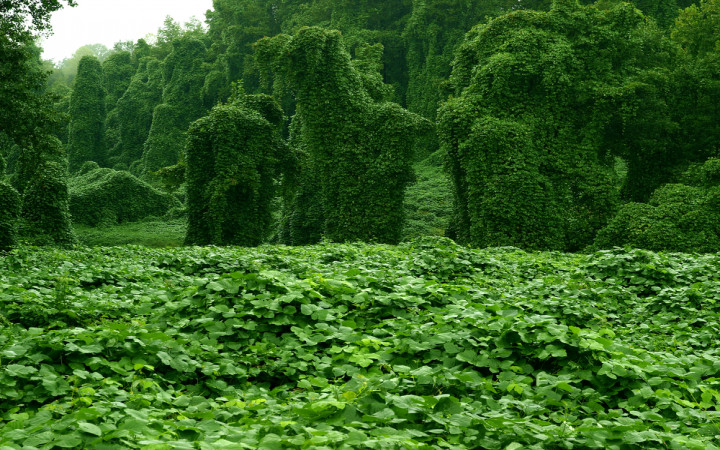Today’s Wonder of the Day was inspired by Iyonna. Iyonna Wonders, “What happened when kudzu was introduced to TN?” Thanks for WONDERing with us, Iyonna!
What's the best part of a garden? If it's a flower garden, then it's the flowers, of course. If it's a vegetable garden, it's the tasty vegetables. What's the worst part? The weeds, of course!
Plants are great. They're useful for many, many things. We eat a lot of different types of plants. It's also fun to play sports on grass. But there are also plants that aren't so fun to have around. For example, we could all do with a little less poison ivy in our lives.
There's another plant that has invaded the southeast part of the United States that many people would like to get rid of. What are we talking about? That blanket of green we call kudzu!!
Some scientists estimate that kudzu covers over seven million acres in the southeastern U.S. It's a fast-growing vine that loves the warm, moist weather in the south. It grows so well that you might think it was a native plant, but it's not!
Kudzu first came to the U.S. in 1876 at the Centennial Exposition in Philadelphia, Pennsylvania. An exhibit of Japanese plants featured kudzu, and American gardeners began to use it in their gardens. They liked its large leaves and fragrant blooms.
In the 1920s, Charles and Lillie Pleas, a couple from Florida who owned a plant nursery, began to sell kudzu via the mail all over the country. They promoted it as a good plant for forage, as they had learned that animals would eat it.
In the 1930s, the U.S. Soil Conservation Service promoted the use of kudzu along highways and other areas where erosion was a problem. Scientists had discovered that kudzu was effective in preventing erosion in areas where it was planted.
Unfortunately, over time, scientists learned that kudzu grows too well. Since it came from Japan, kudzu has no natural insect predators and can be very difficult to get rid of once it starts growing. And once it starts growing, watch out!
Kudzu vines can grow up to a foot a day in warm months. In areas where kudzu grows wild, it's considered a noxious weed, because it can cover trees and shrubs quickly. Although kudzu vines help prevent erosion, they can also kill trees and good plants by denying them the sunlight and nutrients they need to survive.
Some herbicides have been developed to try to kill or control kudzu. Unfortunately, some of these herbicides appear to make kudzu grow even faster! The herbicides that do work can take from four to ten years to completely eliminate kudzu in an area.
Some people have made the best of a bad situation by finding interesting uses for kudzu. Some use it as a food for grazing animals, while others use it to make baskets. Some people have even come up with recipes to turn kudzu into a human food!
In addition to herbicides, other methods for getting rid of kudzu have been developed. These include burning, grazing, mowing, and even a special fungus that might work as a natural herbicide!




